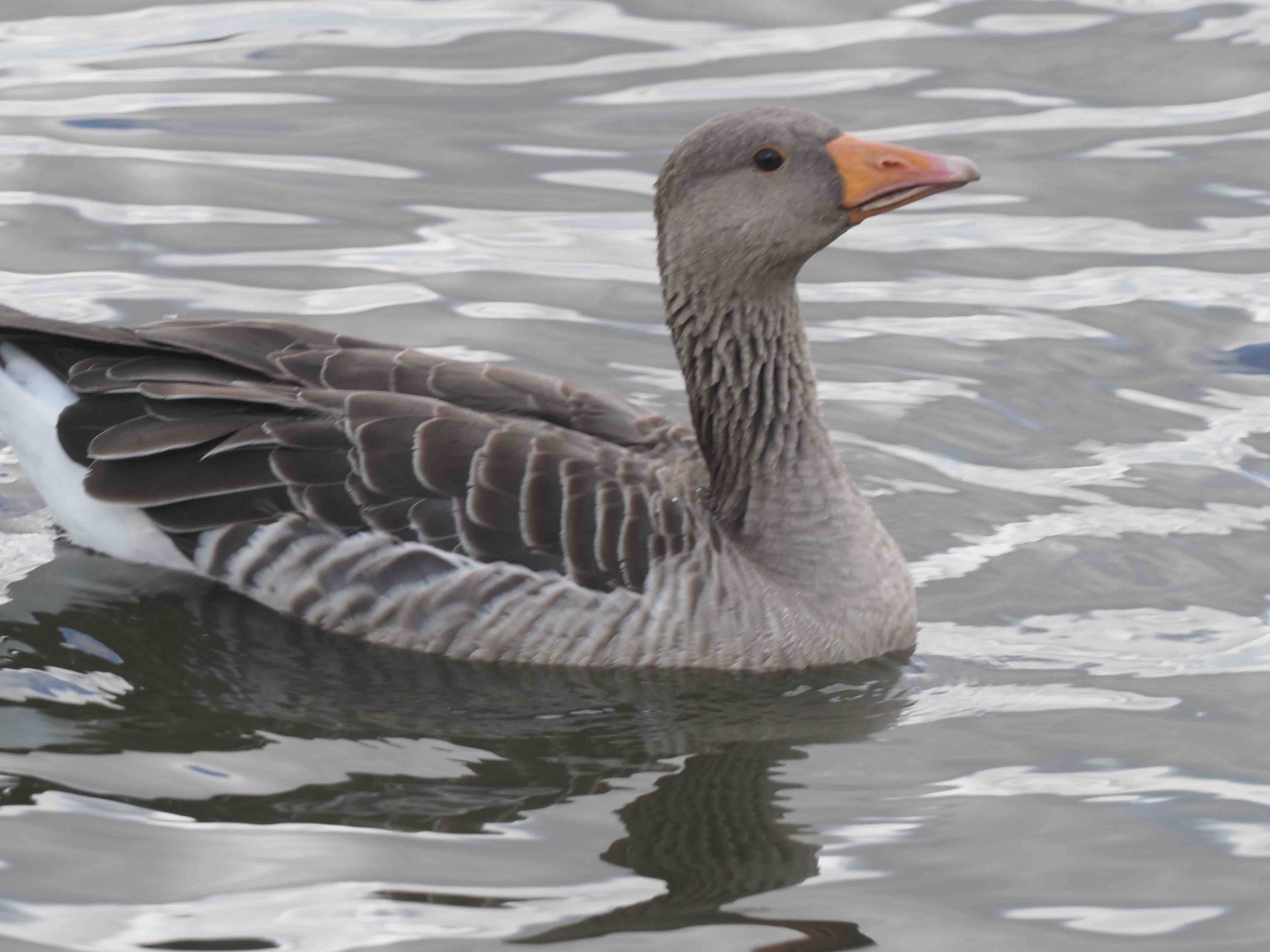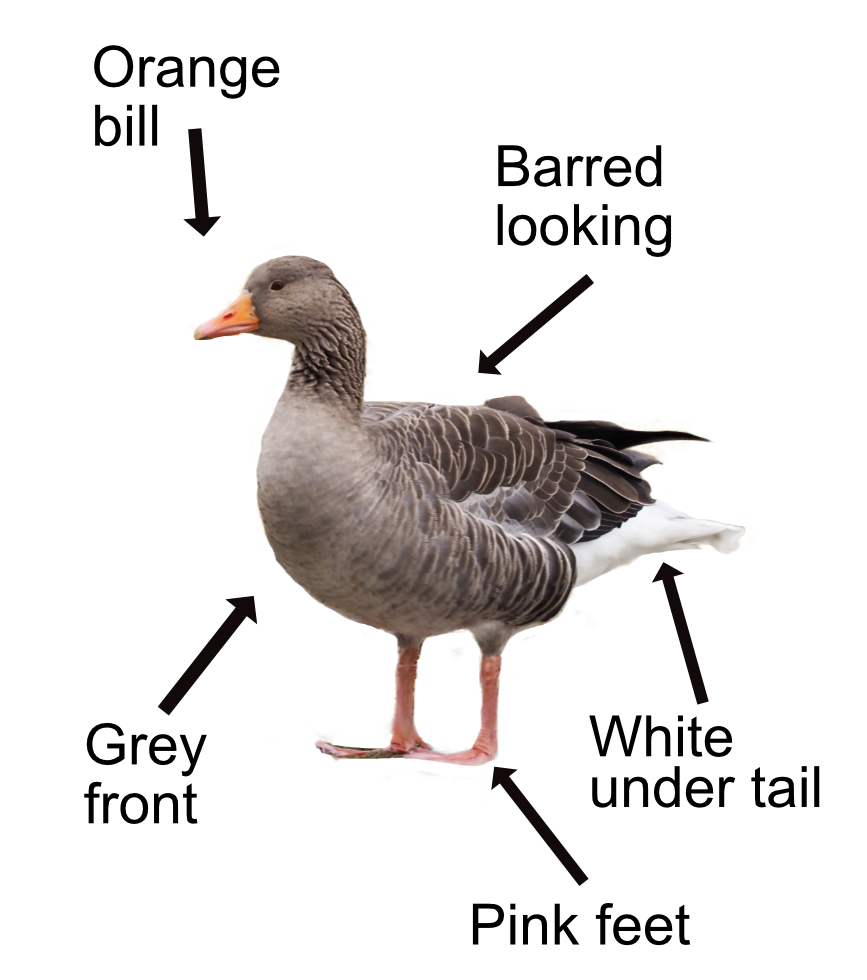
The Greylag Goose is the ancestor of the white domestic goose. How they got them to go white, I have no idea. It must have taken a lot of selective breeding. There are two groups of Greylag Geese in Britain, a small native population found wearing kilts in Scotland and a large feral population found everywhere else from various, well intended, introductions.
The Greylag Goose has a brown back that looks barred with a paler head, neck, and belly that looks mottled. The neck has some dark lines down the side. They have a heavy orange bill, and orangey pink legs. The wings are broad with bluish grey patches and the feathers under the tail are white, giving it a prominent white rear. They have a loud nasal, honking "ank, ank, ank" call when flying, in lines or v-formations, to make sure everyone is keeping up. Like Canada Geese, they are flightless for 4 weeks sometime between May and August while doing their moult.
The Greylag Goose is a herbivore and eats plant material like roots, tubers, leaves, grass, flowers, and water weeds. They feed on farmland or meadows by day and roost on water overnight. Their large powerful bill is great for grazing and digging up roots and, in parts of Europe, this has made them a pest as they can damage crops.

In spring, Greylag Geese travel to their northerly breeding grounds in Scotland and the Hebrides, nesting on moorlands, marshes, around lakes and on coastal islands. They normally mate for life. The nest is built on the ground, near water or under a tree or bush, and is made from a mound of vegetation lined with grass and feathers. They lay 4-6 eggs which hatch after 27 days and the young goslings can fly 50 days later. Like other geese, the youngsters stay with their parents for their first winter.
In Britain, there are about 50,000 Greylags here during the summer increasing to 230,000 in autumn as geese from as far north as Iceland migrate here to their traditional wintering grounds. Their Latin name is 'anser anser' where 'anser' means 'goose'. Another thrilling scientific name 'goosey goosey'. The English name is thought to come from the fact that Greylags left a little later than other geese when moving north to breed so 'lagged' behind them.
In Ancient Egypt, geese symbolised the sun god Ra while in Ancient Rome they were associated with the goddess of love, Aphrodite. Their feathers were used as quill pens and for the fletch on arrows.